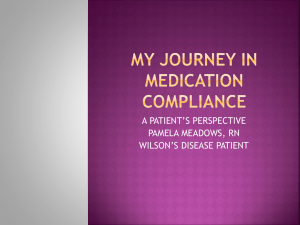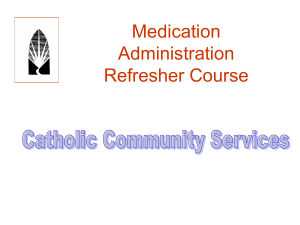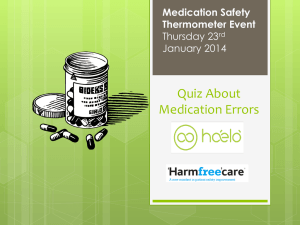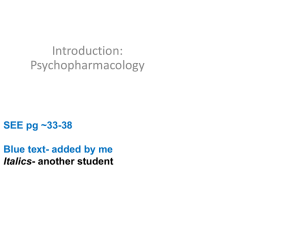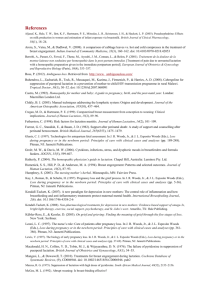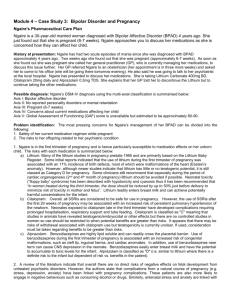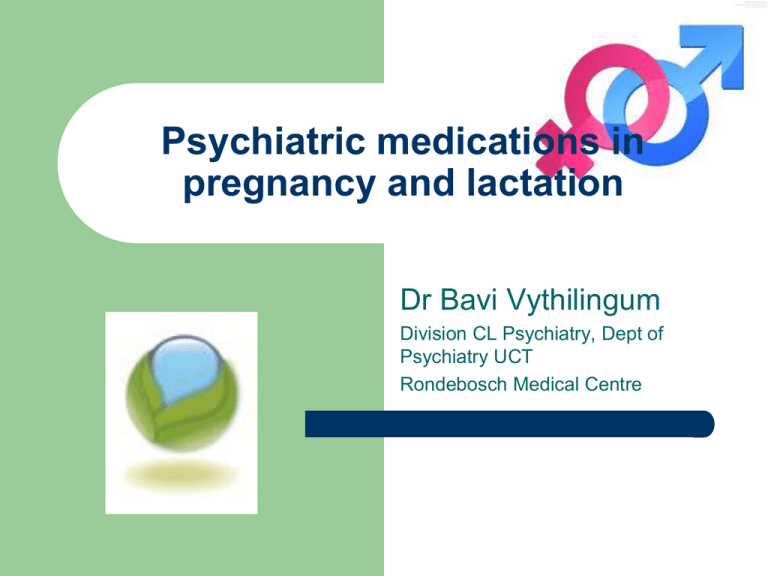
Psychiatric medications in
pregnancy and lactation
Dr Bavi Vythilingum
Division CL Psychiatry, Dept of
Psychiatry UCT
Rondebosch Medical Centre
Psychiatric disorders in pregnancy
In SA 30 -40% of women have antenatal
depression
Decision to treat – benefit to mother vs risk to
child
More accurate – look at benefit to mother
and child vs risk to mother and child
“Would a physician tell a pregnant woman
with epilepsy, ‘Stop your meds and ride out
the seizures until you deliver’? Are the
medications of pregnant women with mental
illness somehow more “optional”?”
Dr Helen Kim, MGH Center for Women’s
Mental Health
Psychiatric medications in
pregnancy and lactation
Prescribing principles in
pregnancy and lactation
Monotherapy
Lowest effective dose
SSRI’s
First line pharmacotherapy
Citalopram, sertraline appear best tolerated
No long term behavioural effects
SSRI and PPHN
Six published studies
–
only three studies adequately powered.
3 studies – increased risk
Absolute risk cannot be determined,
BUT probably less than 1%.
Information does not support discontinuation
or lowering the dose of the antidepressant.
Antidepressants and
teratogenicity
Several studies linking SSRI use to
–
–
–
Large database studies
No face to face interview
Multiple confounders – adequate power?
Qualitatively different cases vs control
–
Cardiac defects
AHDH
Autism
Other drug use, higher rates FAS, older
No control for effect parenting
Tricylic Antidepressants (TCA’s)
No increased teratogenic risk
More adverse side effect profile
–
–
–
particularly postural hypotension
constipation
lethality in overdose
Generally used as second line agents.
Other antidepressants
Venlafaxine, duloxetine, bupropion
–
–
Less data
Probably safe
MAOI’s – no data, avoid due to dietary
restrictions, risk hypertension
Take Home Message
Risk of teratogenecity
Absolute risk is not clear but appears to be
small
Psychotherapy treatment of choice for
perinatal depression
Weigh risk benefit ratio
Management of Bipolar Disorder
during Pregnancy
Should be by a psychiatrist
Teratogenic risk
–
–
–
–
Lithium Ebstein’s anomaly 1-5% (vs 0.5 – 1%
risk)
Na Valproate NTD, other anomalies, 3x vs other
antiepileptics, 4x general population
Carbamazepine 1% risk neural tube defects (vs
0.1% risk)
Lamotrigine limited evidence, cleft palate
Second generation antipsychotics
Attractive
–
–
No described teratogenicity
Mood stabilisers
Metabolic side effects
–
–
–
Boden 2012
gestational diabetes adjusted OR, 1.77 [95% CI,
1.04-3.03]
Higher risk SGA infant - confounders
Medication Summary
Lithium – safest
Lamotrigine, atypicals – appears safe
Individualise for patient
Adequate risk counselling
Patient falls pregnant on
medication
DO NOT STOP MEDICATION
Minimal decrease in risk of defects vs high
risk relapse
Continue meds at lowest effective dose
Early US and anomaly scan
FOLATE
Medication through pregnancy
Changing maternal blood volumes
Increase doses during pregnancy
–
–
Lithium – levels monthly first 2 trimesters, every
fortnight thereafter
Valproate, CBZ – guided clinically, checking
levels every 2 -3 months useful
Delivery
Liaise closely with obstetrician
Hospital
Adequate pain control
IV line up
Stop lithium, benzo’s at onset labour,
recommence post delivery after checking
level
High risk for post natal depression/psychosis
Benzodiazepines
Small increased risk for cardiac/oral cleft
malformations with first-trimester exposure.
Neonatal toxicity (“floppy infant syndrome”)
/withdrawal
Avoid in the first trimester,late in the third trimester
Benzodiazepines II
To minimize neonatal withdrawal, gradually taper the
mother’s benzodiazepine before delivery
–
–
Taper 3 to 4 weeks before the due date and discontinue at
least 1 week before delivery.
If benzodiazepines cannot be tapered
use a short acting agent
advise the mother to discontinue benzodiazepine use as soon
as she thinks she is going into labour.
Medication
Generally SSRI’s and TCA’s safe in
pregnancy and breastfeeding
Antipsychotics – reasonably safe
Mood stabilisers – teratogenic risk
ECT – option
Breastfeeding and Medication
MOST WOMEN ON MEDS CAN
BREASTFEED!!!!!
Risk of child dying from diarrhoea,
respiratory disease, malnutrition higher than
medication side effects
Breastfeeding, bedsharing mothers get more
sleep
Case by case basis
Breastfeeding and Medication
Lowest effective maternal dose
All meds excreted into breastmilk
Watch baby
–
–
Jaundice
Excessive sleepiness
Pre term – probably best not to breastfeed
Breastfeeding and medication II
Antidepressants – generally safe
Antipsychotics
–
–
Infant sedation
Neonatal EPSE
Breastfeeding and medication III
Mood stabilisers
–
–
Lithium
–
All present problems
Consider risk benefit carefully
Maternal hydration important
Anticonvulsant class
–
Rashes
Eglonyl?
Sulpiride
Antipsychotic with theoretical mood elevation
properties at low doses
Side effect of increasing milk supply
Sedating
NOT an effective antidepressant
Pregnancy and lactation summary
All medications present risk – some higher
than others
Weigh risk benefit ratio
PNDSA www.pndsa.org
–
–
0828820072
info@pndsa.org.za
Otispregnancy.org
www.infantrisk.com
In general, women do not use psychotropic
medications during pregnancy without good
reason.
They educate themselves, struggle with
treatment options, and in many cases stop
medication, relapse, and then restart it when
they become ill.
Being pregnant and giving birth to a child is
an exhausting physical and emotional
experience. A woman is vulnerable and
deserves support, not shaming.

